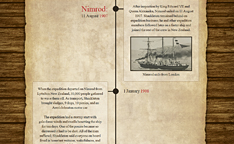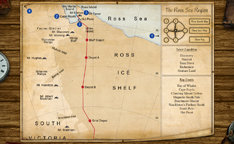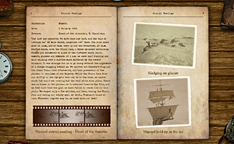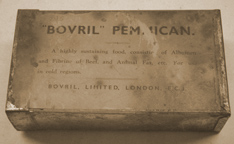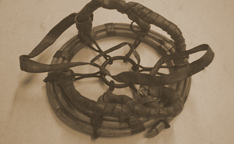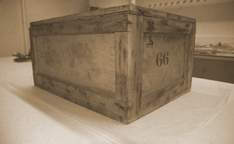British Antarctic Expedition 1907-09 (Nimrod)
Expedition Aim
The aim of this expedition, led by Ernest Shackleton and funded by William Beardmore, was to try to be the first to reach the South Pole.
Summary
- Led by Ernest Shackleton, the expedition ship Nimrod sailed from London on 11 August 1907.
- The expedition's aim was to reach the South Pole.
- The party were forced to set up a base at Cape Royds due to poor weather conditions. However, this broke Shackleton's promise to Scott that he would not winter in this area.
- They made the first ascent of Mount Erebus, one of the world's largest active volcanoes.
- Aurora Australis was the first book to be written, typeset and published in the Antarctic.
- They named the Transantarctic Mountains flanking the Ross Ice Shelf. In total they discovered nearly 800km of the range.
- A separate group led by geologist Professor David Edgeworth reached the estimated location of the South Magnetic Pole.
- On the journey towards the South Pole Shackleton realised they had enough supplies to reach their destination but not enough to cover the return journey. At 88°23'S, just 180km from the South Pole, they turned around. This was the record furthest south for the time.
Awards from the expedition
Whilst the Nimrod Expedition failed to reach the Geographical South Pole, they did discover a route up the Beardmore Glacier - a gateway to a polar plateau - that would allow access onwards to the South Pole.
The Polar Party, consisting of Shackleton, Wild, Marshall and Adams came closer than anyone had to either of the Geographical poles at that time. The journey started from Cape Royds on 29 October 1908, and on 9 January 1909, they reached 88°23′S.
In March 1908, a group of six men lead by David successfully achieved the first ascent of Mount Erebus, the 3,794 meter high volcano on Ross Island.
In January 1909, David, together with Mackay and Mawson became the first men to reach the South Magnetic Pole. The men didn't have the help of any dogs or ponies, but used a motorcar to establish two depots. Even though the motorcar was problematic and broke down, it introduced a new form of traction for polar expeditions, something that would be used on later expeditions and play an important role for the exploration of Antarctica.
During the expedition, the scientists had great successes, arriving back in England with valuable measurements of Antarctic meteorology, flora and fauna, geology, volcanology, and ice.
Silver Polar Medals were awarded to the shore party:
E. H. Shackleton, E.M. Marshall, J. Murray, R.E. Priestley, Sir Philip Brocklehurst, G.E. Marston, J.B. Adams, T. W. Edgeworth David, D. Mawson, A.F. Mackay, A.L. Mackintosh, B. Day, B. Armytage, E. Joyce.
Bronze Polar Medals were awarded to the ship party:
R.G.. England RNR, K.K. Davis, A.C. Cheetham, E. W. Ellis, W.D. Ansell, J. Paton, W. A. Mitchell, F.P. Evans, A.E. Harbord, G. Bilsby, H. Bull, S. Riches, J. Montague, H. Dunlop.
Members of the expedition that had served on Morning (British Antarctic Expedition 1903) who had already been awarded with a Bronze Medal only received a Bronze Clasp.
The Royal Geographic Expedition created a special medal, The Shackleton Medal, awarded to Ernest Shackleton for his leadership and his journey towards the South Pole. The medal was circular and made of gold. All the other members of the expedition were awarded a Special Award, which was a copy of the Shackleton Medal.
Life after the expedition
Returning to England, the expedition's achievements made Shackleton a well-respected and famous expedition leader. After Amundsen reached the South Pole in 1911, followed by Scott in 1912, Shackleton's furthest south achieved was 88° S. His decision to return at 88° S has been described as one of the most challenging decisions in the history of Antarctic exploration.
Some of the Nimrod Expedition crew members, in particular Frank Wild, participated in Shackleton's later expeditions, while others continued their life on sea or on other expeditions in the Arctic and Antarctica.
Douglas Mawson would go on to lead his own expeditions to Antarctica and establish Australia's interest in Antarctic exploration and science.
